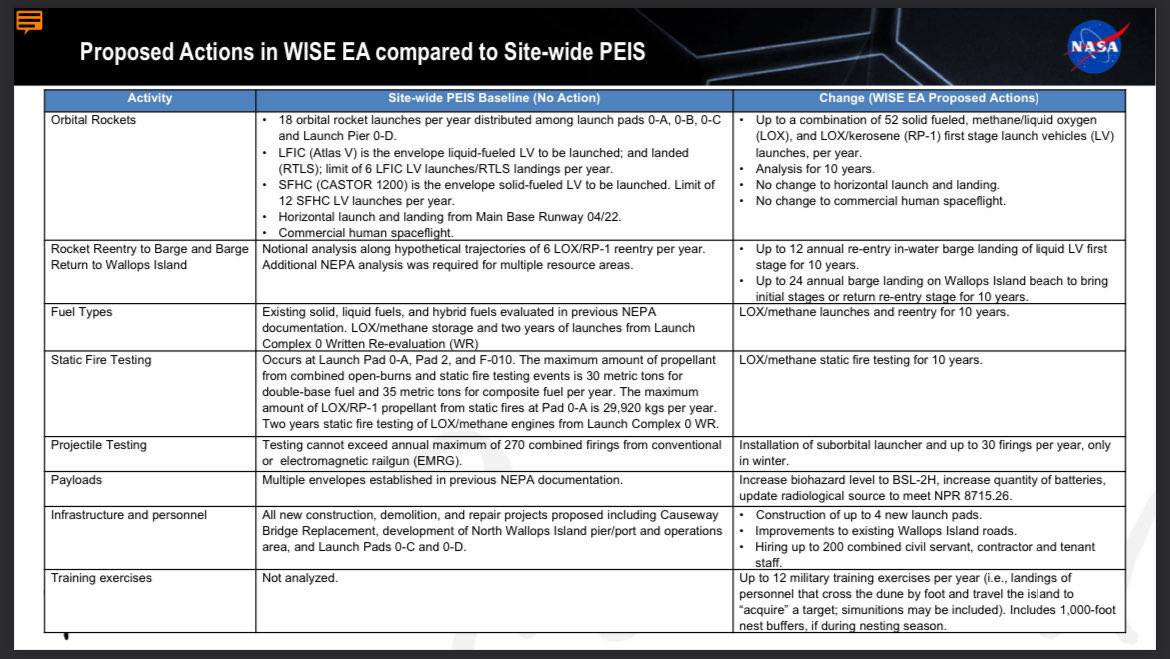NASA expands Wallops Island facility to support three times more launches


NASA is launching a formal environmental assessment of its facilities on Wallops Island, Virginia, to increase the number of rocket launches allowed at the site by nearly 200%, according to slides and recordings from an internal meeting on June 29. April consulted by TechCrunch.
The proposed changes could help ease congestion at the nation’s other spaceports, which have been under pressure from a rapid increase in launch capacity driven primarily by SpaceX. This tension will only get worse as companies like Rocket Lab, Relativity, Blue Origin and others aim to bring new rockets online over the coming years.
Wallops expansion has likely been on the minds of NASA officials for some time. After Rocket Lab made its first Electron launch from there in 2022, agency officials told media that interest from private companies wanting to launch from the site was “high.” And while these plans will eventually be made public as part of the environmental assessment process, this is the first time the scale of the proposed changes has been released.
The Wallops Island Southern Expansion Environmental Assessment (WISE EA), as the agency calls the undertaking, will study the potential consequences of a massive increase in the number of annual launches from 18 to 52. The study will also consider other critical changes to the site, such as water. barge landings of rocket first stages and on-site storage of liquid methane, a new rocket fuel. To fully understand the effects of these changes, NASA will work with contractors who will conduct acoustic analyzes and examine the impacts of air emissions and impacts on marine and local wildlife.
The analysis will also consider the construction of up to four new launch pads and the installation of a suborbital launcher carrying out up to 30 launches per year.
Particularly notable is the increase in launches and new authorized fuel blends. Today, of the 18 annual launches permitted at the WFF, only six can involve liquid fuel rockets, with the other 12 being solid fuel rockets. The engines that power Electron, Rocket Lab’s launch vehicle that takes off from Wallops, use a combination of liquid oxygen and RP-1, a highly refined kerosene.
The new analysis would allow 52 launches per year and allow a fuel mix that also includes methalox, a rocket fuel made from liquid oxygen and liquid methane. Methalox has become the propulsion system of choice for next-generation rockets, including SpaceX’s Starship, Rocket Lab’s Neutron, Relativity Space’s Terran R and Blue Origin’s New Glenn.

A slide showing the proposed changes. Image credits:
One of the drivers of the proposed expansion is the increased launch rate of these companies. (Although Relativity has not publicly disclosed any plans to launch from Wallops, the company, along with Rocket Lab, were listed as the two “participating agencies.”)
The Wallops site has become particularly important to Rocket Lab’s plans to commercialize Neutron by the end of this year. In 2022, the company announced he had chosen WFF as the future home of Neutron’s first launch pad and production facility, thereby laying claim to the island’s future. Rocket Lab’s recovery plans for Neutron also include landing the booster downstream, on a barge at sea.
One of the slides in Miller’s presentation shows a WFF launch forecast through 2032. It is unclear whether the data on the slide was provided by private companies or comes from internal estimates of NASA, and NASA did not immediately respond to TechCrunch’s request for comment. but it lists about five annual Neutron flights per year through 2030. It also lists about five launches of Firefly and Northrop’s MLV by that date.

Image credits: TechCrunch
Environmental assessments are essential: they ensure that NASA and its commercial partners comply with environmental regulations related to air emissions, acoustic impacts and effects on local wildlife. They also provide an essential venue for gathering feedback from stakeholders, including the public. Having an environmental assessment in place is vital for companies like Rocket Lab, as well as Firefly Space and Northrop Grumman, which are together developing a medium launch vehicle.
NASA completed a programmatic environmental impact statement (PEIS) for the Wallops site in 2019, but as agency official Shari Miller said on the call, the anticipated growth in activity on the island “exceeds the figures that were analyzed” for this document. Some proposed actions were not addressed at all in the 2019 document, such as landing a rocket on a water barge. Miller said NASA is simultaneously undertaking what is called a “written reassessment” of the 2019 assessment to understand whether additional environmental assessments are needed to allow storage of liquid methane and to authorize static fire testing. methalox engines at the WFF. This would allow these actions for two years and, importantly, act as a sort of temporary measure to facilitate Rocket Lab’s deployment of Neutron. The full WISE EA would span ten years.
Due to the scope of the various environmental assessments, the entire EA process is expected to take approximately eighteen months, per slide, with the final document released in December 2025.
techcrunch

/cdn.vox-cdn.com/uploads/chorus_asset/file/25466808/247127_Fitbit_Ace_LTE_VSong_0007.jpg?w=390&resize=390,220&ssl=1)



